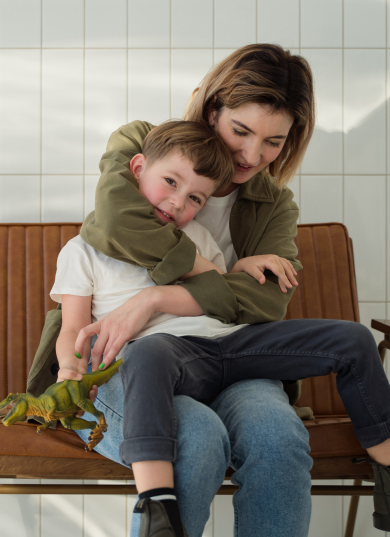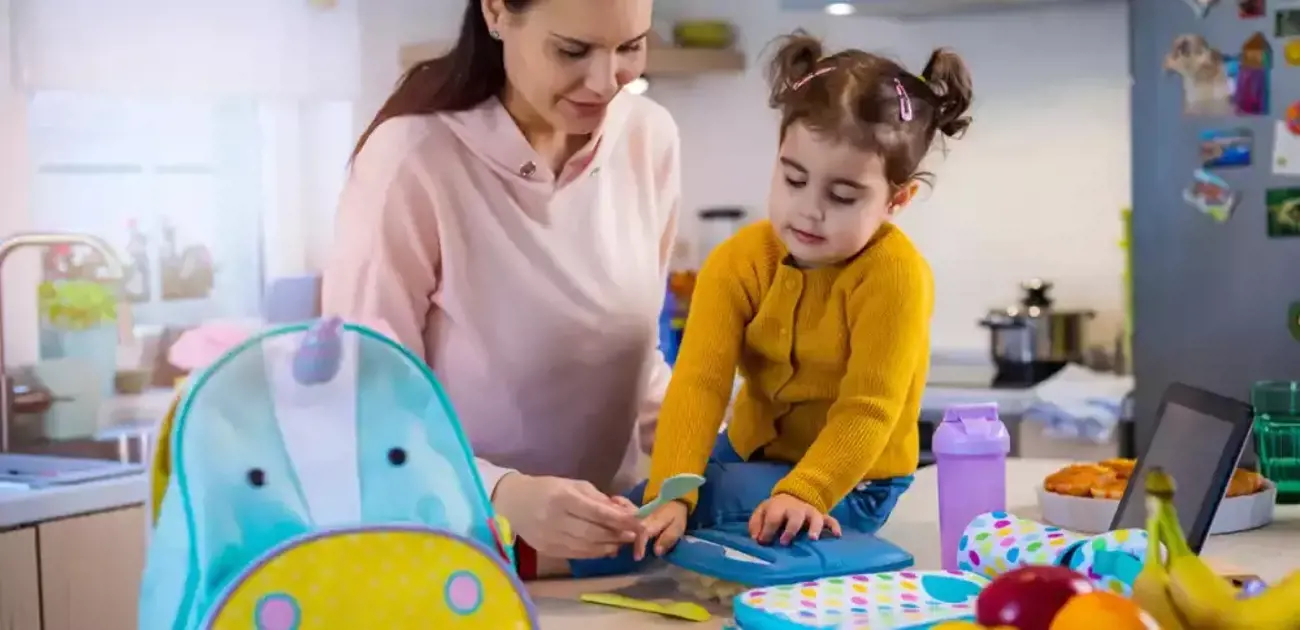Good food powers your child as they learn, play and grow, and whether you’re new to the lunchbox-packing gig, or have fallen into the same old sandwich rut, it’s easy to freshen up your food choices and assemble a healthy lunch box for child care or school.
To learn how to pack in lots of nutrients and keep things tasty, Leanne Elliston, Program Manager at Nutrition Australia and Accredited Practising Dietitian, is kindly sharing some healthy lunch box ideas and tips today.
What does a healthy, balanced lunch box look like for under fives and primary school-aged kids?
A healthy, balanced lunch box for all children is one that includes a mix of foods from each of the five food groups that can look like:
- Whole grain bread from the grain group
- A banana from the fresh fruit group
- Chopped up cucumber from the vegetable group
- A slice of cheddar cheese from the dairy group, and
- Some lean meat, boiled eggs or bean-based dip from the meat or meat alternative group.
For little ones going to childcare, be careful not to load up your child's lunch box too much and keep portion sizes small. For instance, half a chicken sandwich, a small tub of cut-up fruit, a slice of cheese, and some sliced cucumber may be sufficient. Some childcare services have facilities for heating up lunchbox food. If this is the case, then left-over meals, such as casserole, pasta salad or rice dishes are perfect.
Be sure to minimise the amount of ultra-processed foods going into the lunchbox. These foods provide no valuable nutrients and just fuel our children’s desire for more high-sugar, high-salt, fatty foods. They can also adversely affect children’s energy and concentration levels, contributing to poor learning outcomes.
Many of these foods are heavily marketed as convenient lunchbox items, such as fun-size packets of chips, biscuits and salty crackers, fruit drink poppers, and confectionary-laden bars. And whilst there is nothing wrong with the odd treat on special occasions, these ‘sometimes foods’ should not appear in the lunchbox every day.
What do parents need to be careful about when packing a lunch box for their young child?
For young children under three years of age, it’s important to be mindful of choking hazards, such as popcorn, roasted chickpeas or fava beans, and hard vegetables, such as celery and carrot. Remember to cut in half small round fruits and vegetables, such as whole baby tomatoes, grapes and blueberries.
Be aware of the childcare or school policy around food allergies. Given the serious nature of peanut allergy among some children, most early learning centres and many primary schools are nut-free, so avoid packing nut-containing bars and peanut butter sandwiches if this is the case. Young children often need help opening containers and packages. Give them a head start by using easy-open containers in the first place and removing packaging where possible.
Finally, remember to keep food cool to reduce the risk of harmful bacterial growth. If the lunchbox is going to be stored out of the fridge all day, then be sure to use an insulated bag and ice brick, especially during the Australian summer.
Under-fives are often picky eaters. How can parents make healthy lunchboxes appetising for little ones?
Little fingers need little pieces of food, so try not to overload the lunchbox with difficult-to-handle food. Cut sandwiches into finger size strips or small triangles. Fruit and vegetables are easier to eat when cut into pieces, and most children will have no trouble managing a slice of cheese.
For picky eaters, it could be a matter of trying the same food in different ways, e.g. grating cheese or making ‘spaghetti’ pieces of carrot. Many young children will enjoy tinned baby corn spears, ripe cherry tomatoes or even some corn kernels straight from the can.
The bento-style lunchboxes can be really useful for children who like to keep their food separated and have control over how and what they will eat and when.
Some great recipes for little fingers include sandwich sushi, corn fritters, mini meatballs and apricot bites. It’s easy for parents to get a little carried away with food options in the lunchbox, only to be disheartened when much of it comes back uneaten. If you’re trying new foods, try not to overwhelm them with too much of that new food, and be sure to include some familiar foods you know your child will eat.
Remember the division of responsibility: Parents provide, and children decide.
This means that as long as you have provided some variety of healthy foods, it is up to your child to decide how much of them they want to eat, and whether to eat at all.
Keeping the lunchbox food safe and fresh with appropriate containers will also help to maintain its appeal. No one likes a soggy sandwich or bruised banana, so invest in a sandwich box to keep sandwiches fresh and pack fruit cut up in a container so it stays appealing and easy to eat. Squeeze a little lemon to prevent avocado, apple and banana pieces from going brown.
What are some great ways to reduce lunchbox waste?
To stay on top of lunchbox waste, remember to swap, reuse and minimise:
- Swap plastic wrap and disposable zip-lock bags for reusable containers.
- Reuse food wrappings (like bread bags or berry boxes) as much as possible and try reusable beeswax wraps as an eco-friendly option.
- Minimise single-use plastics by choosing foods that create less waste, e.g. make your own popcorn rather than buying pre-packed, and decant a big tub of yoghurt into smaller reusable pots.
Remember, too, that waste doesn’t just refer to packaging. It’s also important to reduce food waste, so try not to overload the lunchbox with food that won’t be eaten. Especially for fussy eaters, avoid putting food in your child's lunchbox that your child is unlikely to eat.
As parents, we always have good intentions to provide a complete balanced lunchbox, but there’s no nutritional value in food that doesn’t get consumed. Be realistic about your child’s food intake, and remember that what they don’t eat at school will inevitably be made up for with nutritious afternoon snacks.
Many parents start the year with the best intentions but lose lunchbox inspiration as time goes by. How can we keep the menu fresh, week after week after week?
Healthy Lunch box Week is happening now, and this is the ideal time for families to get tooled up with ideas, recipes and lunchbox know-how to last through the year. We encourage everyone to build up a bank of lunch box inspiration with Nutrition Australia’s recipes and guides. We have also teamed up with other great organisations to share our collective great ideas on lunchbox recipes, tips and videos.
The Healthy Lunchbox Week website is a perfect one-stop shop for the latest lunch box info across the country, and it’s a fantastic source of inspiration for families, now and throughout the year.


































